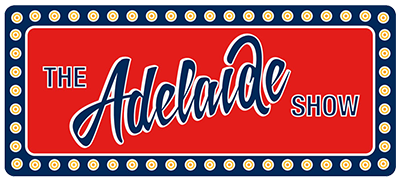Listen to episode 160 of The Adelaide Show podcast, which was published September 14, 2016, to find out which story is fake. This week’s pieces cover photography.
Criminal Photography
New System: Adoption In Adelaide
News May 1924
South Australia has adopted the latest method of criminal photography. The system, which was evolved in New South Wales, will be introduced in all the States of the Commonwealth.. Hitherto in South Australia criminals have been photographed in two positions-full face and profile-but only the head and shoulders have been taken. By the new system prisoners will he photographed in three positions-a full length likeness accompanying the .other two. Detectives with experience in the identification of wanted men by photo graph state that a full length picture makes it much easier to pick the man. Only one plate is required for the three photographs A special hinge-back fitting is attached to the camera, and the opening and closing of shutters by means of this device make it possible to take the three likenesses on the one plate. The accompanying photograph, for which a member of the Adelaide criminal photographic department posed, shows the completed likeness as it will in future be exhibited in the criminal gallery. The figures and letters on the top left-hand corner represent the finger print classification. Underneath is placed the name of the criminal with apologies to the fictitious name of Smith in this instance – with the date on which the photo, was taken. The A of the A2 which follows means that the criminal has specialised in the forging of cheques or documents. A letter code from A to Z classifles the criminals in the sort of crime in which they have specialised; and a detective upon looking at a photo graph can instantly say that his man has invariably followed a special kind of crime, and should more readily know where he is most likely to be operating.
Pampered Microbes
In the service of science. A visit to a laboratory.
The bacteriologist and his charges.
The Advertiser Jan 1914
On the northern side of the grounds of tie Adelaide Hospital there is an unassuming little group of buildings, the appearance of which is in no way commensurate with the outstanding importance of the work that day after day is carried on within its walls
(cut)
Micro-Photography and Its Uses. We went on to the museum and library, and to the apartment in which the fine micro-photographic apparatus is set up. The director showed me how it was possible to take a photograph of a preparation of micro organisms in a few seconds. He explained that the chief value of the photographs was for the interchange of results between scientists engaged in research work. It was not of much assistance to the pathologist, he said, to obtain an enlarged photograph of the microscopic specimen, because it was not often necessary to magnify it unduly. He appeared to regard magnification a thousand times as a sufficiently adequate commonplace.
Photography And Justice. The Camera As Handmaid To Crime
The Advertiser July 1914
Photography has long been used both to defeat and to further the ends of justice. Courts are getting accustomed, says C. H. Browne, of the Adelaide Criminal Inspectors department.
To the coarser forms of camera fraud, such as that committed by pasting parts of one photograph on another and then photographing the whole again, the result is the familiar postal card showing a pumpkin as big as a man, and a ship sailing through the window of a horse. Similar frauds, however, may be so subtle as to be “put over” the bar of justice. The ability to record in detail any image will only lead to crimes where recording of a building layout, doors, laneways and windows and such can only lead to more sophisticated crimes with criminals of a more professional bent. Such an idea was not available in previous times when only an artists could make such accurate images however the camera now makes this task a simple one for even the common man, or potential criminal. The ability to create forgeries is also made available with this new recording method as a perfect copy of a document can now be made for later reproduction on genuine parchments. Even as photography will help with identification documents, licenses and passports, the ease of fraud will go hand in hand with these new ideas.
Mr Browne says that the burgeoning increase in camera availability and ease of use is making these options, which in previous years were mere fantasy, a more likely reality the Police would have to deal with.
